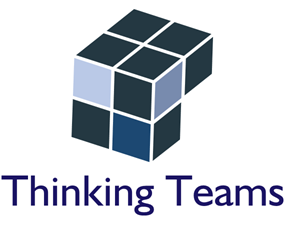Artificial Intelligence (AI) is concerned with computer systems that perform tasks associated with human intelligence, such as recognizing faces, understanding language, playing chess, assembling electronics, or driving a car.
From an engineering point of view, AI is an area of research and development that has been going on since the 1950’s. Over the years since then, methods from various branches of mathematics and computer science have been pressed into service to develop AI computer-based systems. You can find a more detailed overview of AI’s technical underpinnings in my paper here and my video here. If you really want to see how broad the field is, glance at the Wikipedia article on AI.
One of the earliest approaches to AI was artificial neural networks. This approach was inspired by the human brain, which is known to operate using billions of interconnected units called neurons. While much is still unknown about the human brain, we have known for a long time that part of its operation is based on neurons turning “on” or “off” based on interactions with other neurons.
In the 1950s engineers tried interconnecting simple electronic units that could turn on or off in response to other units connected to them, and discovered some interesting things about these “artificial neural networks”. These networks could perform calculations, and they could “learn” to do these calculations by giving them enough examples and designing them to systematically adjust themselves until they got correct answers.
Engineers didn’t get very far with these artificial neural networks until modern computers, the internet, and some clever engineering made it possible to create artificial neural networks with millions or even billions of units (now software implemented on special-purpose hardware), and to train them with millions of examples to do remarkable things, like recognize objects in images, translate languages, and beat world champions in the games of chess and go. Because these huge (“deep”) artificial neural networks can learn complex patterns in the physical world, they have enabled innovations such as advanced industrial and humanoid robots and self-driving cars.
Artificial neural networks is by no means the only AI technology used today. For example AI researchers’ work in path planning is used to optimize the routes of truck fleets and warehouse robots, and symbol-based natural language processing is used in chatbots and personal assistants. However, it is the recent stunning advances in artificial neural networks that are driving AI’s accelerated adoption in multiple industries.
This brings us to looking at AI, not from an engineer’s point of view, but from the viewpoint of someone who wants to improve their business or organization using AI. From this viewpoint, here are some things to keep in mind:
- While deep artificial neural networks enable all kinds of tools useful to business (see this post for examples in the financial industry), there is much more to any practical business system than the neural network at its core. In this sense, AI is just a selling point for a new generation of automation and enterprise software, with the same kinds of challenges and tradeoffs businesses have faced with innovations such as enterprise resources planning and customer relationship management software, and on-line selling
- Deep artificial neural networks are essentially one-trick ponies. They are masters at finding patterns in millions of examples, and making predictions when new examples are encountered. Sure, it is amazing what can be done with this one trick, for example accurately translating speech to text, or recognizing thousands of different objects from digital photographs. But, if what your business needs cannot be framed as this kind of pattern recognition, or you cannot feed the neural network enough data, then a deep neural network by itself is not going to help you
- Incorporating AI into an organization does have some special challenges, due to its high profile, “all or nothing” implementation requirements, demands for organizational change, and need for human supervision. An AI project will likely fail if these challenges are not met.

